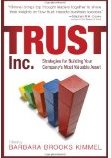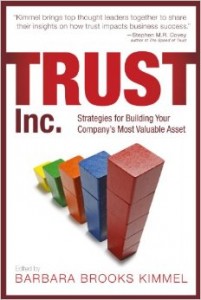 It’s the opening to dozens of gangster movies. The mob guy with a rakish hat and a sneer sidles into the hard-working good citizen’s retail establishment, knocks some cigarette ash on the floor, and says, “Nice little business you got here, mister. It’d be a shame if something were to happen to it, know what I mean?”
It’s the opening to dozens of gangster movies. The mob guy with a rakish hat and a sneer sidles into the hard-working good citizen’s retail establishment, knocks some cigarette ash on the floor, and says, “Nice little business you got here, mister. It’d be a shame if something were to happen to it, know what I mean?”
And we do know what he means, and so does the terrorized citizen. It’s the protection racket. If you pay, then indeed, nothing happens. If you don’t pay, well, it’s amazing how bad stuff just happens.
Of course, that doesn’t happen in business today. Right?
The White-collar, Fully-legal, Hands-clean Shakedown, Corporate Edition
In fact, something much like that does happen – though it’s highly sanitized. It’s legal; no individual has bad or evil intentions; and it’s justified as a business best practice. But the effect is the same – the business at the end of the food chain pays a lot of “insurance” for bad events that don’t look like happening. And instead of mobsters getting rich, it’s lawyers and insurance companies.
A simple example. My firm recently sold a single, one-day, off-the-shelf learning program to a corporate client. The contract and statement of work proposed by the client ran to over 10 pages of fine print.
On our end, it went through the hands of four people, including our lawyer, who I struggle mightily to keep under-employed. On the client side, we know personally of three people with whom we interacted, and I am guessing there were more. Total elapsed time was 2-3 months.
The contract included fairly typical clauses to the effect that we would not steal their intellectual property, lists, or secrets; generously they agreed to return the favor.
It also included clauses saying that we would generally indemnify them against everything from lawsuits about IP to people falling on their sidewalks to taking bad advice from us. (And here I worry about trying to get clients to take my advice!)
Most interesting to me was the clause that – at their request – we would submit our trainers to drug testing and to criminal record searches, through whatever such means as the client would dictate, of course at our expense. Moi? Nous? I mean, we’ve got our faults, but…
All this in order to gain the privilege of giving a workshop on – wait for it – how to establish trust-based business relationships. (And yes, I am painfully aware of the irony, even if the client is not. But you go where you are most needed, and agreeing to a training session on trust is actually a pretty good first step.)
Sadly, this is not a unique story. In fact, about 80% of it is standard operating procedure these days. In this case, I sent an email protesting that we felt mildly insulted about the drug test thing. I received back a most polite and apologetic note assuring me that that was surely not the intent, and that they felt badly about it – it’s just that, this is just how business is done – you know, it’s not personal, it’s business.
And voila, we’re back at the movies. See what I mean?
What’s Going On Here
I want to emphasize, there are no bad intentions here; there are no laws being broken. To use the business vernacular, this is risk mitigation. But it’s risk mitigation gone rogue.
It starts with companies themselves as victims of a shakedown. A lawyer – perhaps their own internal counsel – tells them that they are subject to grave exposure from a lawsuit by some wild-eyed plaintiff’s attorney. Since lawyers vastly prefer to err on the side of caution, they like to be armed with shotguns when they go to hunt fleas.
One form of protection, conveniently served up by insurance companies (who love their lawyer friends) is straight-up insurance. But, apparently cheaper than buying your own protection is to lay off that protection cost onto those who are employed by the company: their suppliers, their employees, and their customers.
And so we get oppressive do-not-compete clauses for employees; mandatory arbitration in the fine print for customers; and send-that-indemnification-downstream to contractors for any risk you can think of.
The Extortionate Impact on the Economy
I welcome the comments of those better versed in economics than I to more accurately describe this, but I can suggest the outlines of four broad effects.
One is simply over-insurance. If I have market power over you (as big companies generally do over little companies, and buyers generally do over suppliers), then I can force you to pay for my insurance. And, I’d prefer to be over-insured rather than under-insured thank you very much, and frankly I don’t care if you have to over-pay for it. In fact, I’ll get it back in nice lunches from my professional partners-in-crime.
I have no idea how to quantify this effect, but since the phenomenon covers every industry, my tummy says it’s Big.
Second, this kind of burden massively adds to the level of transaction costs in our economy. Initially described by Ronald Coase in the 1930s, transaction costs are non-value-adding costs which enable value-adding through other means, e.g. economies of scale.
But there comes a point when transaction costs begin to overwhelm the possible value they can enable, and cutting transaction costs themselves becomes a more sensible way to achieve economic success.
Are we at such a point? Consider that the US has the highest ratio of lawyers per capita of any country in the world. And that the lawyer-per-capita ratio in the US has gone up by 250% since 1950. (Personally, I can assure the reader that the contracting process for training sessions like the one I describe above was vastly simpler 20 years ago. And I sincerely doubt clients got burned, whether by drug-addled trainers or via other means.)
Third, this shakedown amounts to a massive, systemic substitution of check-boxes in place of management to govern the natural friction that exists between contracting people. For example, it substitutes a gigantic system of criminal record checks in place of a few personal phone calls for references. Among the costs of such substitutions is a decline in trust. A big one.
Finally, when you pile on so many transactional, impersonal “risk-mitigation” steps, you open up wide opportunities for corruption of various types. Corruption isn’t just handing over bags with cash. How many times have you heard, “Oh don’t worry about that phrase, we never pay attention to that anyway, it’s just part of the standard form.” How many times have you read the fine print at the bottom of every online purchase you make?
Where there is such casual, wholesale and willful ignoring of agreements, there is a ton of room to become cynical and unobservant about said agreements.
The next level up is easy – think of robo-signing mortgage agreements. And note all the irate protestations by bankers about how this was really no big deal. It’s not such a long step from there to the bags with cash. (Some readers might enjoy Mark Twain’s tale The Man That Corrupted Hadleyburg).
The parallel with moving from locally-made mortgage loans to globally aggregated, tranched and securitized packages is evident. When you depersonalize, you desensitize, and you de-ethicize.
Shades of Shakedowns
Of the two, the gangsters’ shakedown is more honest. It is authentic; you know what you’re being told, by whom, and for what purpose. You know that the threat is real, the intent unmistakable. By contrast, in the modern corporate shakedown, there are no villains, everyone has plausible deniability; they all have clean consciences and clean hands.
The mob had corrupt lawyers who could game the system. In the modern corporate shakedown, it is the system that is doing the shakedown. We have MBAs, lawyers, and actuaries all soberly attesting that they have lowered the risk of our business contracting system at every stage.
Does anyone else smell a Black Swan here?
The Alternative
A major issue with trust is how to scale it. But maybe an even bigger issue is forgetting what it’s all about in the first place – what we have lost. Here’s a reminder.
I had a conversation with a solo consultant the other day, a disgusted emigrant from corporate America. He now does consulting and coaching for small business clients. His entire contracting process is as follows:
At the beginning of every month, you will send me a check for $5000. For the rest of that month, I will answer the phone all the time whenever you call. Should I ever not receive my check by the fifth day of the month, I will know that you’ve become unsatisfied with my services, and we shall both expect further conversations to cease.
He has never had a dissatisfied client. His cost of sales is minimal. His legal fees are zero. His risk is pretty much nothing – because he has created a trust-based relationship.
I find that completely unsurprising. That’s just how it works – if we remember to let it.
 Trust, in case you hadn’t noticed, has gotten “hot” lately. But much of it sounds very vague—soft, fluffy, nice-to-have, the buzzword du jour.
Trust, in case you hadn’t noticed, has gotten “hot” lately. But much of it sounds very vague—soft, fluffy, nice-to-have, the buzzword du jour.
 Last week I wrote a very critical blogpost about Volkswagen. I was, of course, hardly alone in doing so; the scandal has created tremors beyond even recent examples.
Last week I wrote a very critical blogpost about Volkswagen. I was, of course, hardly alone in doing so; the scandal has created tremors beyond even recent examples. Do your eyes glaze over at that title? Mine do. I always click on such titles, but am usually disappointed when I get what feels like low-content or high fluff-quotient material. So I set out to tighten up the perspective.
Do your eyes glaze over at that title? Mine do. I always click on such titles, but am usually disappointed when I get what feels like low-content or high fluff-quotient material. So I set out to tighten up the perspective. Suppose you’re a high school administrator in a metropolitan area. Your district has the opportunity to use a number of iPads at subsidized rates to help in the students’ education.
Suppose you’re a high school administrator in a metropolitan area. Your district has the opportunity to use a number of iPads at subsidized rates to help in the students’ education.


 Sometimes we don’t think right. Often we don’t think right, and we don’t even notice it. (This is well-described in a book called
Sometimes we don’t think right. Often we don’t think right, and we don’t even notice it. (This is well-described in a book called  This is the third in a four-part series about why we don’t trust companies. The final post will offer solutions.
This is the third in a four-part series about why we don’t trust companies. The final post will offer solutions.